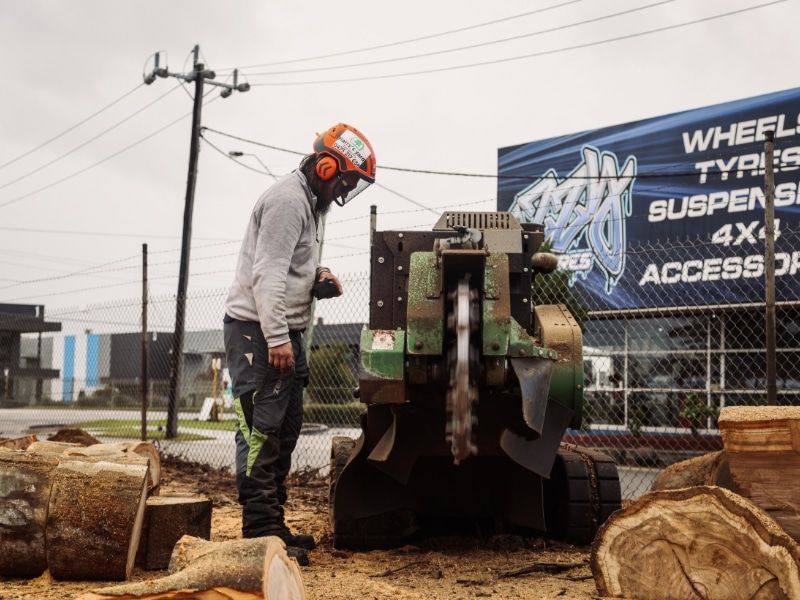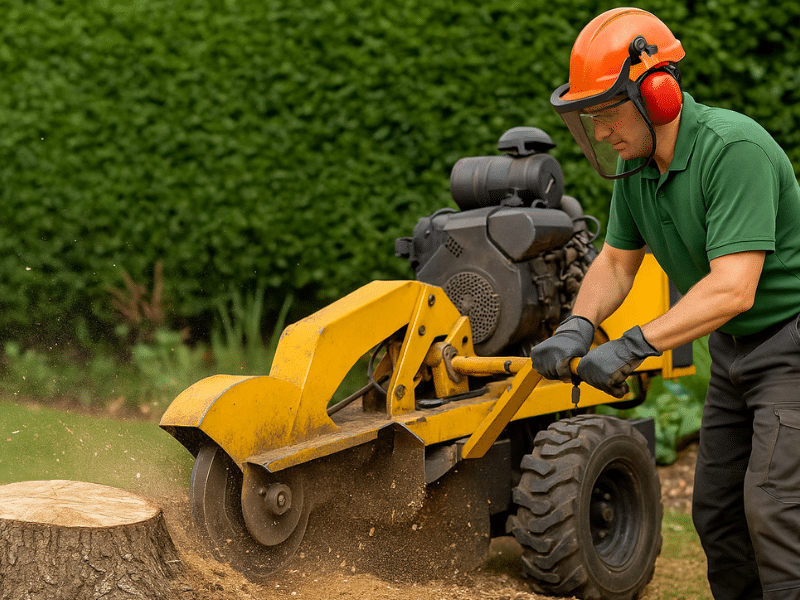Tree stumps may seem like minor eyesores, but they often carry hidden risks, derailing your landscaping goals. From inviting pests to disrupting new plantings, a leftover stump can interfere with your yard’s health and safety. Whether planning to build, replant, or enjoy a hazard-free lawn, choosing a method that truly works is essential. This article explores how finding the proper stump removal solution can prevent long-term headaches and set your garden up for success.
What problems do tree stumps cause if left behind?
A leftover stump doesn’t just sit there quietly. It actively works against the health and appeal of your landscape.
- Tripping hazard for kids, pets, and anyone enjoying your garden
- Pest magnet, drawing termites, ants, and beetles
- New growth issues, with shoots popping up around the stump
- Underground rot, potentially affecting nearby plants
In addition, stumps often become home to fungi, such as mushrooms or bracket fungi, which can be toxic or harmful. Left untouched, these fungi release spores that may spread to nearby trees or ornamental plants. The longer a stump remains, the more extensive its root system becomes, eventually entangling itself with plumbing, irrigation, or nearby tree roots, making removal even more complicated. One overlooked issue is the threat of disease. Research shows that stump decay is often linked to the spread of tree illnesses, such as Cypress canker. If your garden includes susceptible species, it’s worth identifying and preventing cypress canker in your trees to reduce the risk of widespread damage.
Why do most DIY stump removal methods fall short?
Rolling up your sleeves and trying something sounds appealing. However, DIY attempts often result in incomplete jobs and hidden damage.
- Lack of equipment, especially for deep-rooted or old stumps
- Time-consuming effort, often taking several weekends
- Injury risk, mainly when using chainsaws or chemical removers
- Improper disposal, which can violate local council rules
Even if you manage to get rid of the stump itself, remnants often linger underground. These leftovers can foster fungi or invite pests, leading to an even bigger headache than you started with. That leftover wood debris can also complicate your landscaping plans. If you aim for smooth, usable ground post-removal, knowing how to level ground after stump removal is just as important as removing the stump itself.
How do you know a stump removal solution will work?
The right solution isn’t just about brute force—it’s about fit. What works in one yard might not work in another.
- Site conditions, such as soil type and stump size, vary
- Tree species, which affects how stubborn the roots are
- Desired outcome, whether you’re replanting or building over
- Timeframe, since some methods take weeks while others are same-day
So, how do you judge the effectiveness of a stump removal solution? It comes down to results and risk. Will it remove the stump completely and safely? Will it preserve your garden and prevent regrowth? One strong indicator is if the method involves a tailored approach and aftercare recommendations—signs that you’re dealing with professionals, not quick fixes. It’s also wise to ask for a breakdown of services and what guarantees are provided.
Why is expert stump removal a wiser choice?
Some jobs are better left to the pros. Experienced arborists bring more than muscle to the table.
- Specialist tools that go deeper and cleaner
- Site assessments to match removal methods to your needs
- Regulation compliance, especially for chemical or mechanical methods
- Efficient disposal, so you’re not left with a mound of mulch
The most effective methods go beyond just removing the stump. They account for plant health, prevent regrowth, and improve soil condition for future landscaping. Suppose you’re looking to avoid unnecessary risks or patchy results. In that case, it’s wise to explore stump removal options that protect your landscape and are tailored to suit your space.
Is chemical treatment a safe stump removal solution?
Chemical options are popular because they’re cheap and don’t require machinery. But are they safe?
- Soil contamination, especially near vegetable patches
- Pet exposure, particularly with lingering residue
- Fire risks, with certain chemicals that dry out the wood
- Uncertain results, as decomposition may take months
While chemical removal might seem hands-off, it’s rarely the safest long-term solution. You’ll likely need repeat applications, and the chemical runoff can impact nearby flora and groundwater. A licensed expert should handle the application and containment if you still prefer this route. That way, you minimise the risks and avoid harming your landscape. Some professionals also include detailed explanations about the timeline and limitations, so you know exactly what to expect during the stump grinding process or alternative removal plans.
What are the environmental risks of stump removal techniques?
Every removal method has an environmental footprint. The trick is choosing one that balances effectiveness with ecological responsibility.
| Method | Emissions | Soil Impact | Speed | Safety |
| Manual Removal | Low | Minimal | Slow | Moderate |
| Chemical Treatment | Low | High | Moderate | Low |
| Stump Grinding | Moderate | Low | Fast | High |
| Burning | High | Moderate | Fast | Low |
When done by pros, stump grinding offers a good balance. It removes the bulk of the wood, avoids soil contamination, and has minimal impact on surrounding greenery. Unlike burning or chemical-heavy options, this method supports a cleaner transition to new planting or construction projects.
Which stump strategy best matches your landscaping goals?
Your future plans for the yard should guide your choice.
- Replanting? Go with deep grinding to remove all root systems
- Building over? Complete removal ensures stability and safety
- Natural finish? Leave the stump as a carved feature (but treat it properly)
- Low-maintenance? Choose a method that prevents regrowth long-term
Also, consider post-removal soil care. Flattening the area and reintroducing nutrients is essential. Top-dressing the site with compost and allowing it to settle for a few weeks will help stabilise the ground. With the proper preparation, you can turn a once-problematic stump site into a thriving new section of your landscape.
Final thoughts
In short, yes. The right solution avoids long-term issues, keeps your garden safe, and aligns with your landscaping dreams. It’s best not to wing it if you’re preparing for a veggie patch or want a hazard-free lawn. A tailored stump removal strategy doesn’t just clear away dead wood—it sets the foundation for healthier soil, stronger plant growth, and safer access for your family and visitors. It’s about working smarter, not harder, with methods that suit your property’s layout and future plans. When you invest in the right help, you’re not just fixing a problem—you’re improving the whole ecosystem of your outdoor space. For reliable advice and custom solutions, you can speak with the team at The Yard about your landscape needs. They’ll help you confidently take the next step.



